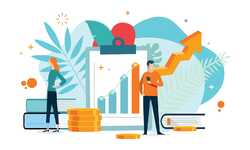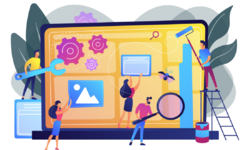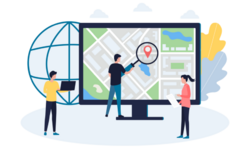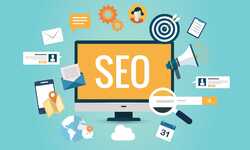What is a Sales Funnel?
We all want our businesses to succeed, otherwise, we've gone quite wrong somewhere.
One of the best tactics to increase the profitability of your business is to identify and improve the sales funnel, so we'll explain what it is and how to use it to your advantage.
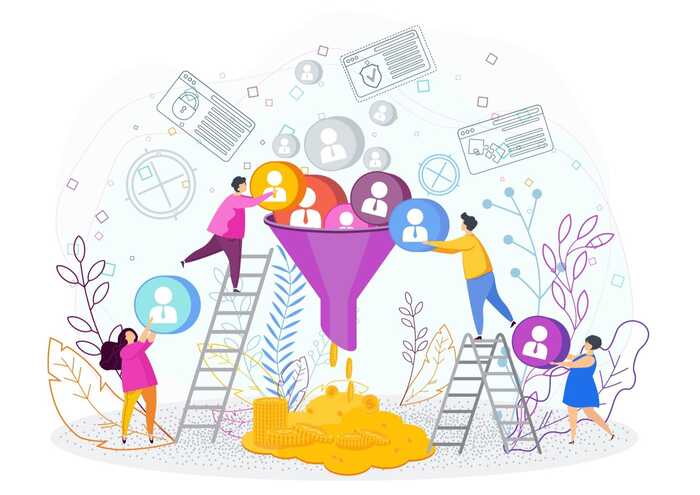
Sales Funnel
Marketing TerminologyA visual description of the journey that potential customers take from learning about your product or service to purchasing it. Dividing the funnel into stages can help identify how to retain more customers at each stage - increasing sales.
The Benefits of a Sales Funnel
The more that you can understand and detail about the journey your customers take when viewing, reviewing and then (hopefully) purchasing your products, the more refined you can make each stage of the journey to avoid losing customers along the way.
Most commonly you will see your sales funnel described with percentages. 100% of your customers join the top of the funnel and you want to see the maximum percentage possible reach the end of the funnel and actually purchase your product.
The percentage you can expect to see at the end is heavily dependent on the product, as getting someone to convert in terms of consumables is much more likely than getting someone to purchase high end, luxury one-off items.
Sales Funnel Stages
The things which entice potential customers when they first become aware of your business are quite different to their expectations when they're ready to purchase. By dividing your customers based on their journey you can try to reduce drop off - the people who decide it's not the product or service for them and leave the funnel.
The funnel can be divided into so many stages depending on your business type and marketing strategy, but the four main stages of a classic marketing funnel are awareness, interest, decision and action.
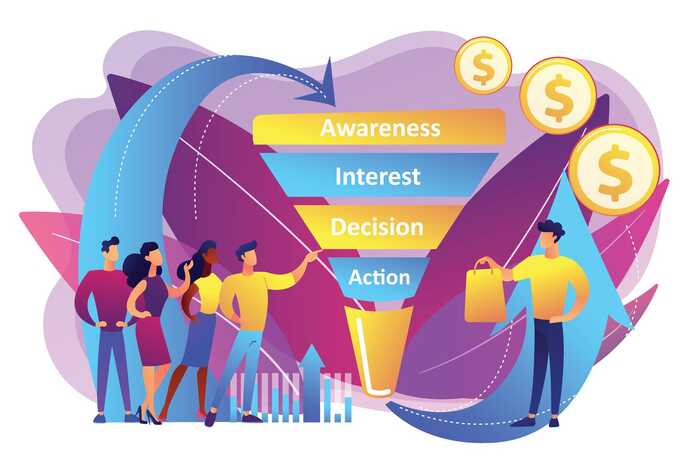
Awareness
This may not be the first time that your business name or product have been in front of the customer, but this is the first time they notice, they are now aware of you and what your business does.
If you're selling the exact thing that they are looking for and they aren't the type to shop around, they might dash straight to action and purchase your product or service.
It's more likely, however, that once they are aware of you there is still work to do before they become a customer. But getting their attention is a very important step.
Awareness Driving Examples
- SEO - ranking in search results for their vague request whilst browsing
- Social Media - organic or paid posts in their timeline
- Sponsorship - of an event or sports team for example
interest
These people are interested in the products and services you offer, they may be researching their options or comparing different companies.
You want these customers to see what a great company you have, the customer service and attention to detail perhaps, are what will convince them to look into their product type with you and not your competitors.
Depending on your price point, convincing your customers of a quality product will be more or less key to their decision to purchase. It's much easier to convince a customer to risk £10 than risk £1,000 with a company that doesn't give off all the signals that they know what they're doing.
Interest Driving Examples
- Blogs - writing around the subject that you're the expert on as proof of your expertise
- Policies - your delivery prices, information, the company you use, your returns policy etc
- Customer Reviews - legitimate testimonials on your site which have a recognisable logo from a reputable review website
decision
They're finally ready, they want to buy the kind of car/software/hotel stay that you have on offer. They may have narrowed it down to a few options, but you're (hopefully) in the running.
For example, they want to buy a top of the range wooden swing seat - it's time to make your best offer. By this stage they're on the product page, you are a high-end item so discounts aren't the best course of action.
Offering added value like personalisation that lower budget items can't replicate, whilst emphasising the higher quality experience of your product when purchased with some artfully placed testimonials can make the percentage of those putting your product in their basket improve.
Decision Driving Examples
- Price - lower price point, offers, promotions and discounts
- Free delivery - when most of the competition charges this can make all the difference
- Added value - things that your product can offer which can't be found on lower budget items
Action
You're not finished when they've made their decision, the job is not done until the money is in your hands/bank account.
They may have decided to purchase your item but they are now attempting to navigate that purchase. Are there any roadblocks stopping them from completing your online checkout? Or maybe they can't get through to an advisor to take on the services you provide.
This one is so specific to your product or service that the only advice we can give is to make it as simple, quick and easy as possible. Once they have decided then let them buy or sign up - but keep any upselling or complications that you can until after they've made their initial purchase.
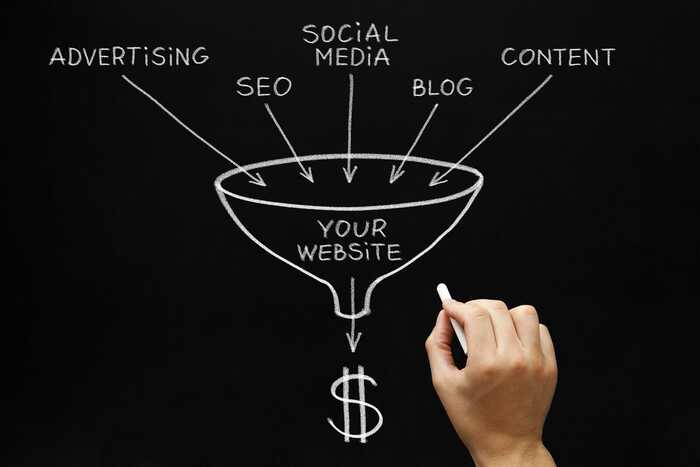
Optimising Your Funnel
As well as trying to lose as few customers throughout the funnel as possible, it's a great idea to try to increase the number of customers entering the top of the funnel too.
If you get 10% of potential customers to the purchasing end of the funnel, but you only have 100 going into the top, your sales would obviously benefit from having a higher number entering the top, as 10% of 1000 is going to mean more profit for you.
If your main sales funnel is your website, then marketing efforts such as SEO, PPC, social media and newsletters will drive more traffic to the website and get more people into the top of the funnel.
There's one other element to the funnel which we feel is often omitted from the classic 4 stage funnel - what happens afterwards?
Repeat
The easiest customers to target for any business are happy repeat visitors. They may never need to purchase the same item again, but they can purchase other similar items from you for themselves or as gifts, and they can repeat purchase consumables related to the product.
They're also likely to bring others into the top of the funnel with them if they're really pleased with your product or service, they may tell others about their experience and share an order with them or put them in touch.
Almost all types of business benefit from making the most out of customers who have converted and purchased their products - assuming they have had a good experience since spending their money with you. Nothing kills a bad product like good marketing.
Increasing Profitability
As a marketing agency we spend time not only getting people into the top of the funnel, but keeping them in the funnel and increasing their likelihood to spend with your business.
Refining what the sales funnel is for your business may seem like an intense process and a fair amount of generalisation but using it to identify pain points in the process and using various marketing tactics to tackle these can add a few percent here, a few percent there and before you know it your sales are up 20%.
If you're struggling to work out your sales funnel alone then get in touch. We've got over 40 years experience in marketing between us so we've seen a huge variety of sales funnels. If you're tired of throwing money at adverts and campaigns which don't boost your sales then refining the sales process is the best place to start.
One of the few platforms which can feed customers back into every level of the sales funnel is search engine optimisation, check out our SEO packages for getting your website found in search engines for brand awareness, initial interest and decision making stages.
Other Relevant Resources
There's always more to learn, we recommend these blogs:
Posted on August 17th 2020

